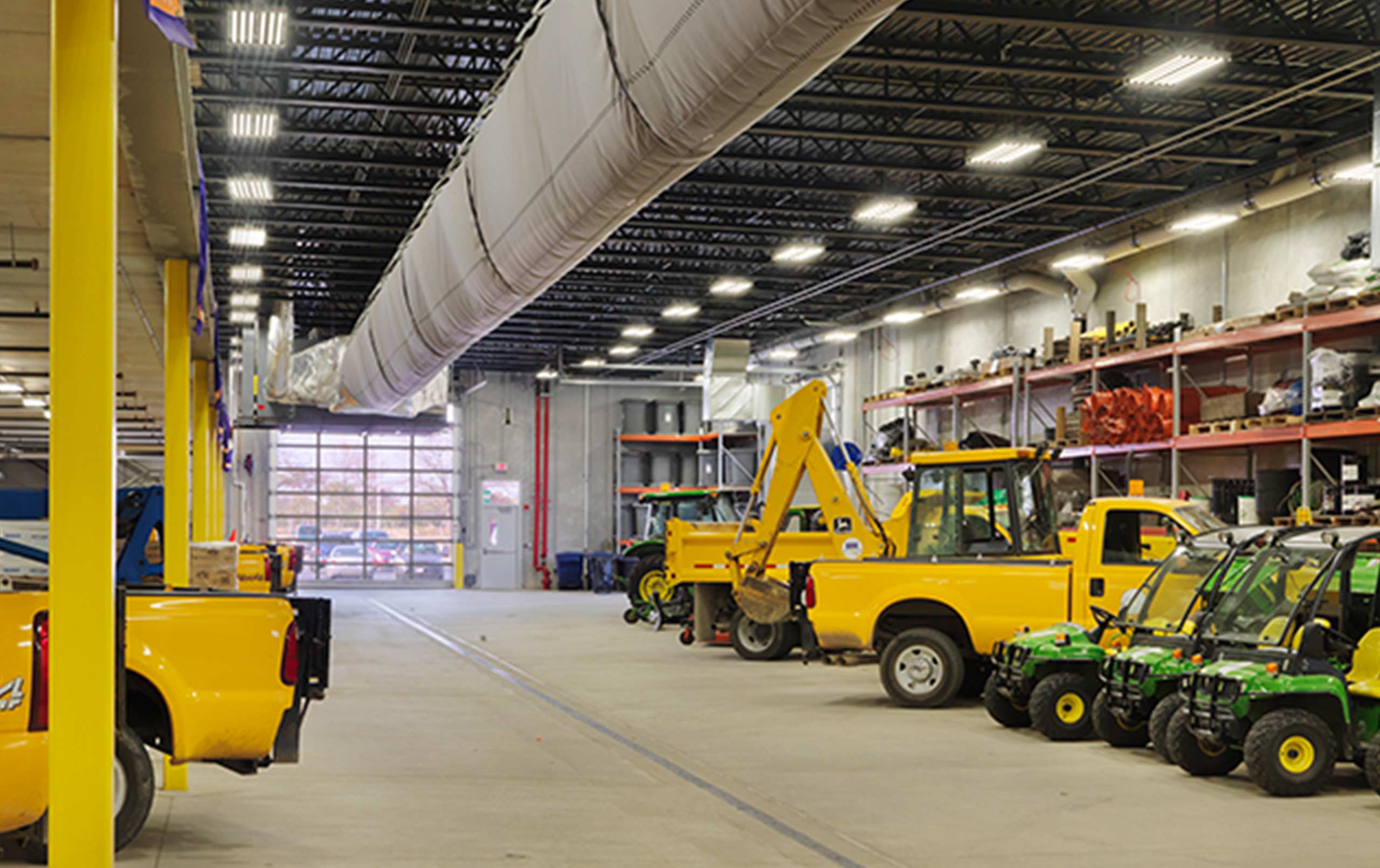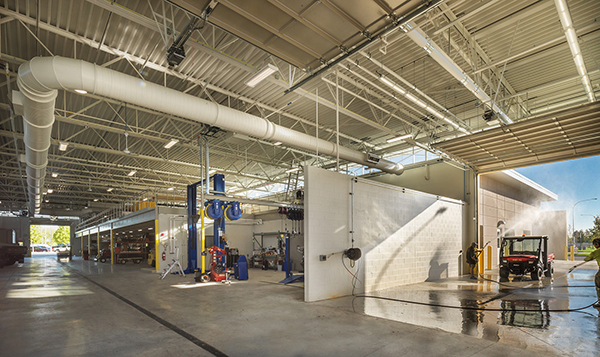
Heated indoor storage makes sense financially and functionally.
Besides employees, one of public works/campus maintenance providers’ most valuable assets is its fleet of vehicles. We understand the importance of treating employees well, but what about those vehicles?
Previous posts in this series offer strategies for saving costs without sacrificing design, and for screening resources from the public view. This installment relates to protecting vehicles, and thereby extending their lives.
Before their new facilities, the College of DuPage (COD) and Joliet Junior College’s (JJC) maintenance personnel operated out of facilities built in the ’70s. When it came to vehicle storage, both institutions (like many public works providers) lacked heated indoor storage. What storage they did have was severely limited. In COD’s gymnasium-turned-garage, there was so little space that vehicles had to pull out like a funeral procession. JJC had even less space for indoor vehicle storage.

Outdoor storage slows productivity and cuts down vehicle life . . . especially in regions with more extreme winters. Personnel that don’t have heated storage waste countless hours while warming up vehicles in winter. Then there’s the toll that cold, snow, and ice take on unsheltered vehicles. Also, those extended outdoor warm-ups pump more exhaust into the environment.
For all these reasons, I strongly encourage public works and campus maintenance providers to locate their entire fleet in one garage. That’s the path that both COD and JJC took, and the results prove it was a wise decision.
Both facilities have spacious heated garages with parking stalls, drive-through lanes, and parts storage. Bringing all the vehicles under one roof cuts down warm-up times (and exhaust) and prolongs vehicle lifespan. The garages also provide a controlled maintenance environment. Staff can get where they need to be, when they need to be there.
See “Public Works/Maintenance Facility Design Essentials part 1 (Effective yet Affordable) or part 2 (Screen Resources).
Contact us to learn more about public works/maintenance facility design or comment below to share your thoughts about this post.


